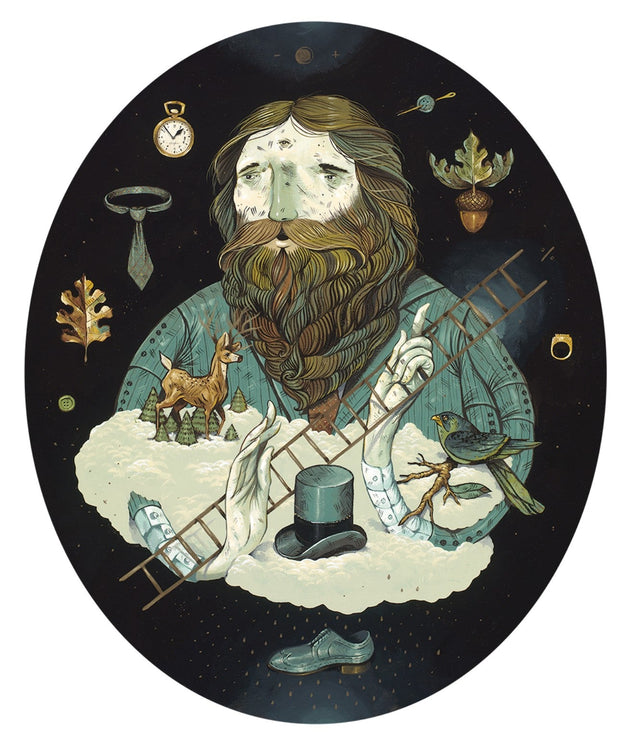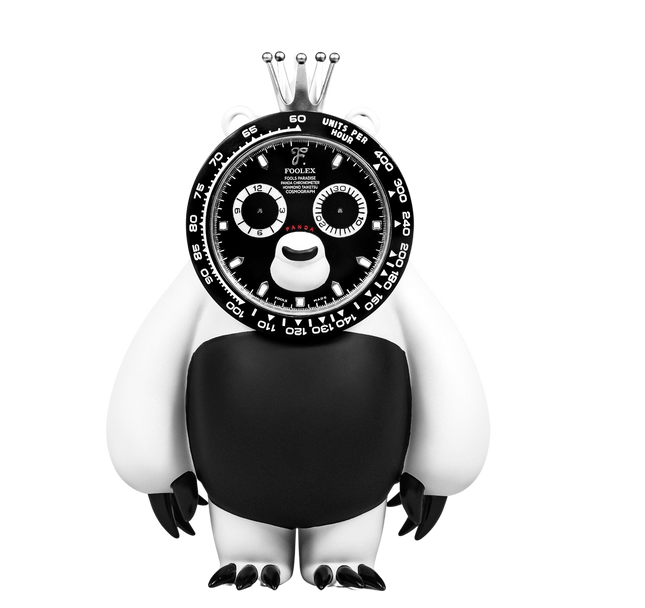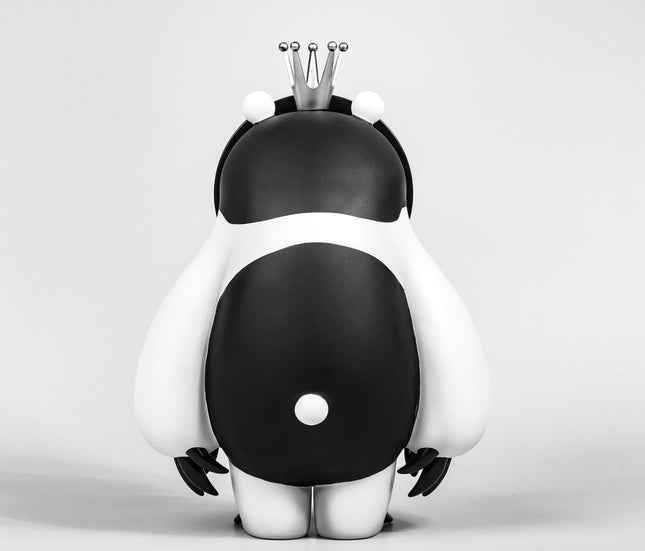
Time


Honmono Taiketsu Reverse Panda Art Toy by Honmono Taiketsu
Reverse Panda Limited Edition Vinyl Art Toy Sculpture Collectible Artwork by Pop Modern Artist Honmono Taiketsu x Fools Paradise. 2022 Limited Edition of 499 Size 11" Tall New In Box. Black & White Panda Bear Animal with Rolex Watch Clockface. The Role of Reverse Panda in the Evolution of Street Pop Art & Graffiti Artwork The Reverse Panda Limited Edition Vinyl Art Toy Sculpture is a compelling testament to the evolving narrative of Street Pop Art & Graffiti Artwork. Crafted by the acclaimed pop modern artist Honmono Taiketsu in collaboration with Fools Paradise, this 2022 collectible embodies a fusion of street art sensibilities and pop art's appropriation of commercial imagery. Limited to a series of 499, the 11-inch tall figure is a creative amalgamation, featuring a black and white panda bear adorned with a Rolex watch clockface, presented in mint condition within its original packaging. This piece mirrors the conceptual framework of pop art through its utilization of iconic elements recontextualized in a new and thought-provoking manner. The panda, an animal often associated with peace and tranquility, is juxtaposed against the luxury and precision timekeeping symbol. Such a contrast is not merely visual but serves as a commentary on the intersections between nature and the constructed ideals of status and wealth. Combining these elements, Taiketsu and Fools Paradise critique the commodification of natural and cultural symbols, a conversation deeply rooted in modern street and pop art discourse. The Reverse Panda symbolizes the playful yet provocative character that defines much of Street Pop Art & Graffiti Artwork. It is an object that defies convention, challenging the boundaries of what is traditionally perceived as collectible art. In its form, the artwork conveys a narrative that is simultaneously accessible and complex, appealing to a broad audience while inviting introspection on themes of consumerism, identity, and the passage of time. Reverse Panda as a Cultural Artifact and Icon of Modern Art As a cultural artifact, the Reverse Panda Vinyl Art Toy Sculpture encapsulates the zeitgeist of the modern era, where the lines between high art and popular culture are increasingly blurred. This limited-edition piece is as much a collectible object as it is a piece of contemporary art, showcasing the distinctive signature of Honmono Taiketsu and the innovative design language of Fools Paradise. Its existence within the limited series of 499 pieces adds to its allure, creating a sense of urgency and exclusivity often associated with the fine art market. The artistic narrative of Reverse Panda is further enriched by its commentary on the anthropomorphization of animals in popular culture and their representation within the luxury market. The Rolex watch clockface, serving as the figure's head, is a direct nod to the societal obsession with time and luxury. In its stance, the sculpture comments on the often-ironic relationships humans have with animals as symbols, where, on the one hand, they are adored and protected. At the same time, on the other, they are exploited and commercialized. The Reverse Panda Limited Edition Vinyl Art Toy Sculpture is a multifaceted piece that represents the intersection of various artistic and cultural threads. It is a statement on the state of contemporary art, a medium through which Honmono Taiketsu and Fools Paradise engage in a visual dialogue with the public. Through its innovative design and underlying messages, this artwork significantly contributes to the Street Pop Art & Graffiti Artwork movement, reflecting its dynamic, evolving nature and its capacity to comment on the complexities of the contemporary world. Through the Reverse Panda, the artists remind us that art reflects society and is a powerful tool for questioning and understanding it.
$620.00



